Simulating a 1H-15N HSQC experiment with 2 NH-pairs
Pulse Program: INVITP
Spin System:
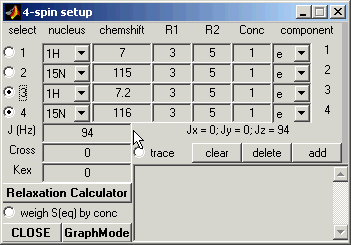
The spin system selected for this example consists of 2 protons and 2 nitrogens, grouped in two N-H pairs. The one-bond coupling between 1H and 15N in each pair (1-2 and 3-4) was set to J = 94 Hz.
The GraphMode Panel looks like this:
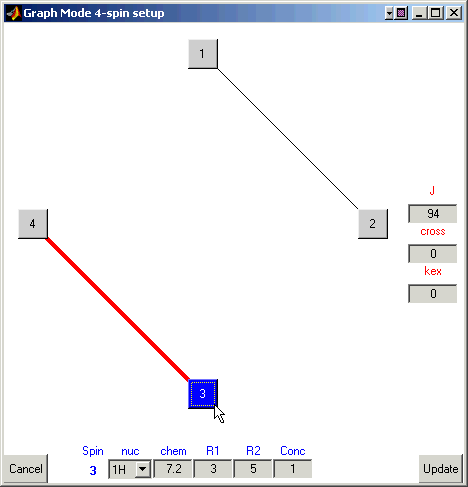
Program Parameters:
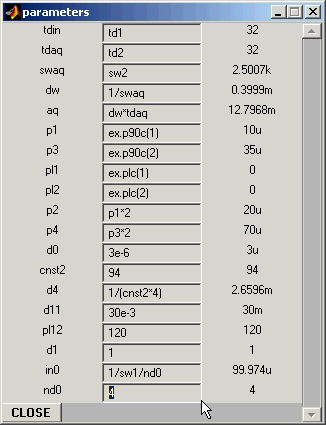
Set the following values: nd0=4, cnst2=94, d1=1s. After setting cnst2, the value of delay d4 should automatically change to 1/(cnst2*4) which corresponds to 1/(4J).
Note: the actual setting for td1, td2, sw2 etc and those defined through them could be different as they depend on the values of these parameters set in the Experimental Setup Window and are updated automatically.
Experimental Parameters:

td1=128, td2=64, ns=1, SWp1=2 ppm, SWp2=0.5 ppm, Op(1H)=7.1ppm, Op(15N)=115.5ppm.
Set channel 2 to 15N. Associate td1 with 15N by setting BF1 to CH2.
Data Processing:
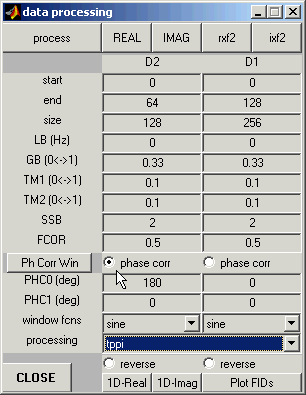
Select TPPI for proper processing in the f1 dimension.
Select a 180-deg zero-order phase correction in order to have positive cross-peaks intensities.
The resulting HSQC spectrum should look like this one:
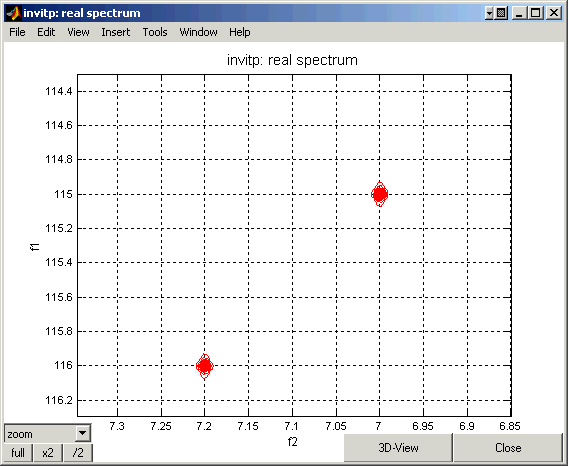
Here is a 3D-view of the resulting HSQC spectrum:
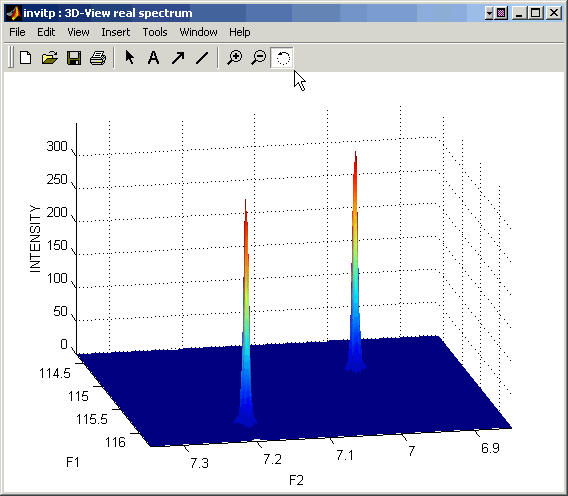
Go Back
Back to Top
Go Back to VNMR Tutorial Index
This manual page was designed by David Fushman & Olivier Walker.
(c) Copyright 2003 by David Fushman, University of Maryland.






